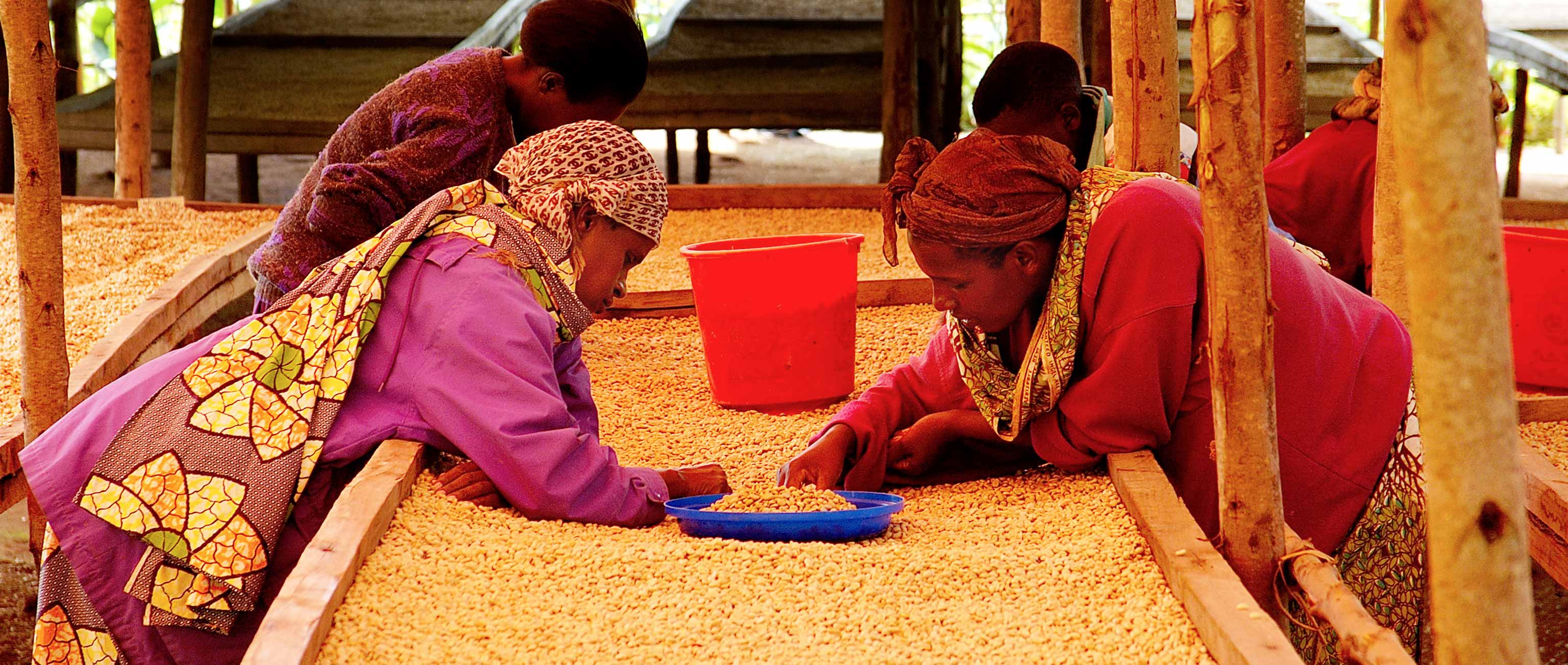Solutions for a Changing Climate

The agriculture sector is highly dependent on consistent climatic conditions to produce food. The roughly 475 million smallholder farmers in developing countries, who rely largely on rain-fed rather than irrigated agriculture, will play a critical role in providing food security to a growing population. These farmers though are most vulnerable to climate effects. Extreme heat and drought stress, flooding, and new pests and diseases associated with climate change will exacerbate the risks long familiar to smallholder farmers: low yields, low incomes, and poor water availability. “Climate-smart agriculture” will simultaneously enhance smallholder productivity and food security, improve farmers’ ability to adapt to a changing climate, and reduce their greenhouse gas emissions.
Root Capital, a 2005 Skoll Awardee, invests in the growth of agricultural enterprises so they can transform rural communities.These businesses purchase crops such as coffee, cocoa, or quinoa from smallholder farmers. With growth, they become engines of impact that can raise incomes, create jobs, empower women and young people, sustain peace, and preserve vulnerable ecosystems. As of March 2017, Root Capital had deployed over $1.1 billion in credit to 659 businesses, who collectively source from over 1.2 million smallholder farmers.
Elizabeth Teague, Root Capital’s Environmental Performance Manager, says that its client businesses and farmers are feeling the effects of climate change universally, but with wide variations based on geography. “In Latin America, changing weather patterns exacerbated the effects of crop diseases, especially coffee leaf rust,” said Teague. “In Colombia and East Africa, the strongest El Niño weather patterns on record caused extreme flooding or droughts that created major challenges for farmers. And in the coffeelands across our portfolio, rising temperatures have pushed coffee’s optimal growing area to higher altitudes—meaning some farmers face the choice of either abandoning their farms to move higher, switching to a different crop, or adapting their growing techniques to a climate no longer best-suited for coffee.”
Root Capital’s approach to building resilience is multi-faceted. By working with agricultural businesses that each source from many smallholders, it can reach hundreds or thousands of farmers at a time. As a lender and trainer, it identifies climate risks for its client businesses, and works to build their clients’ financial capacity, management capacity, and offers agronomic training to manage those risks.
“We’re working both to adapt existing tools (loans, financial advisory) to address climate risks, and to develop entirely new tools with our clients,” said Teague. “Zooming out a bit, we recognize that financing climate adaptation is risky by definition, and thus requires blended capital from a variety of sources to appropriately manage that risk. As an impact investor, we must think about how we can fairly distribute the costs of adaptation across the farmer, the business, the lender, or the broader investing community.”
Root Capital has managed blended finance to promote farmer resilience through the Coffee Farmer Resilience Initiative, and is a member of several consortia that engage directly with climate-smart agriculture and farmer resilience. “It’s essential that we collaborate to source capital for adaptation”, says Teague. “If we don’t, it’s the world’s poorest farmers who will pay the price.”
Root Capital seeks to address the ongoing challenge of ‘downscaling’ the billions of dollars channeled into climate finance by governments and multinational institutions. “Multi-billion dollar commitments such as the Green Climate Fund are a major step in the right direction,” says Teague. “Now it’s those on the front lines of climate change—rural businesses and smallholder farmers—who need that support the most.”
Notifications